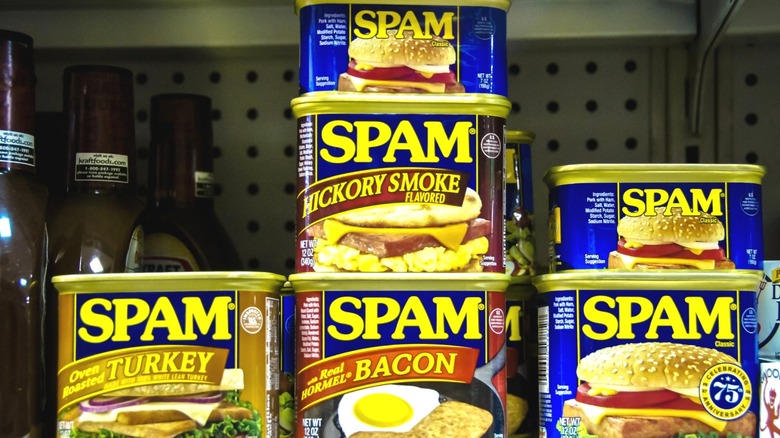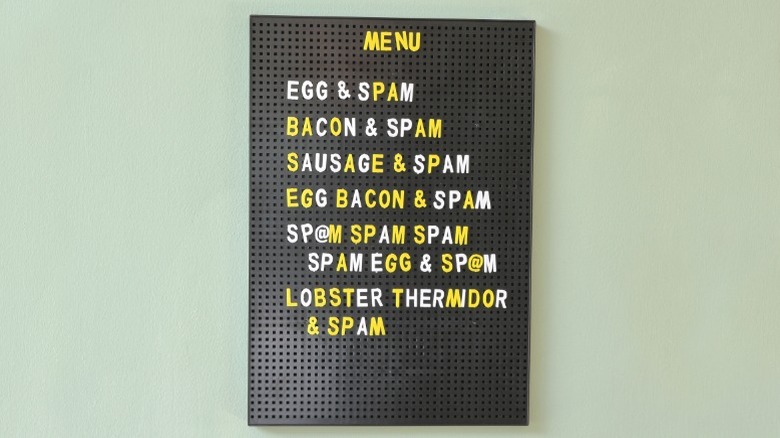What Did Spam Do To Deserve Being Associated With Junk Mail?
There are two main definitions of the word "spam," one more common than the other. The first is the various flavors of Spam, the canned meat product which was once an American lunchtime staple. (Nowadays, it's a cultural icon of Hawaii and the Philippines, as detailed in this history of Spam.) The other definition is much more common these days: a catch-all term for the deluge of unwanted, useless, and downright harmful junk messages we receive online, whether by email or through messaging apps.
How did this sodium-heavy but otherwise harmless (perhaps disregarding the seasonal novelty Figgy Pudding Spam) can of processed lunch meat become associated with chain letters, phishing scams, and messages from profiles with a bunch of numbers at the end of their names? Well, it wasn't anything to do with the food itself, instead having more to do with a famous "Monty Python" sketch centered around Spam's intrusive presence.
Monty Python gave spam mail its name
The important thing you have to realize about the Internet is that it was invented by — and for many years, populated almost exclusively by — a bunch of giant nerds. And back in the '80s, when a brave new world was being explored on Usenet, a lot of nerds were fond of "Monty Python," the British comedy troupe behind the TV show "Monty Python's Flying Circus" and several beloved cult films. (In fact, the programming language Python is named after the troupe.)
One of the most famous "Monty Python" sketches, "Spam," involves a couple being served at a cheap diner whose menu is inexplicably Spam-centric. Much to the dismay of the Spam-hating Mrs. Bun, the waitress rattles off the menu: egg and Spam; bacon and Spam; sausage and Spam; Spam, Spam, Spam, Spam, Egg, and Spam; and so on. It's enough to drive a person mad even before a table of Vikings start a boisterous song declaring their love for, "Spam, Spam, Spam, lovely Spam, wonderful Spam!" (Why is there a table of Vikings in a cheap British diner? That's "Monty Python" for you.)
When Usenet users were faced with a barrage of unsolicited ads, messages, and posts, some drew comparisons to the omnipresence of Spam in that sketch, and the practice became known as "spamming."

